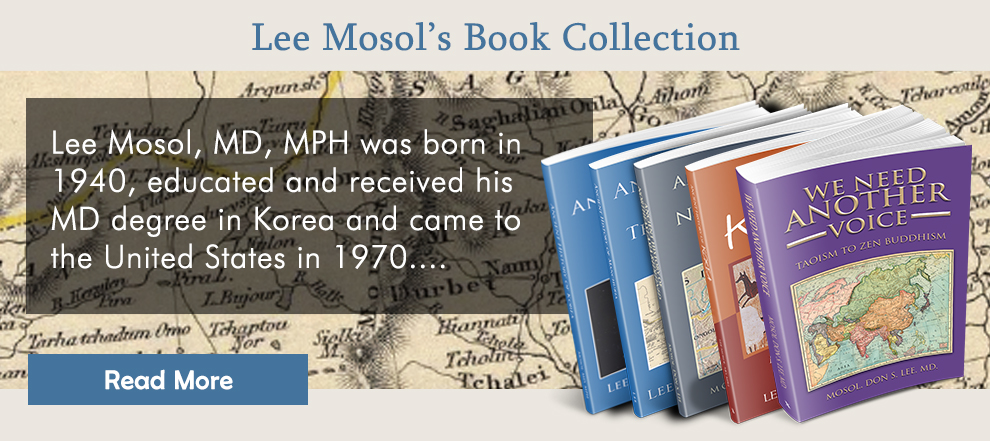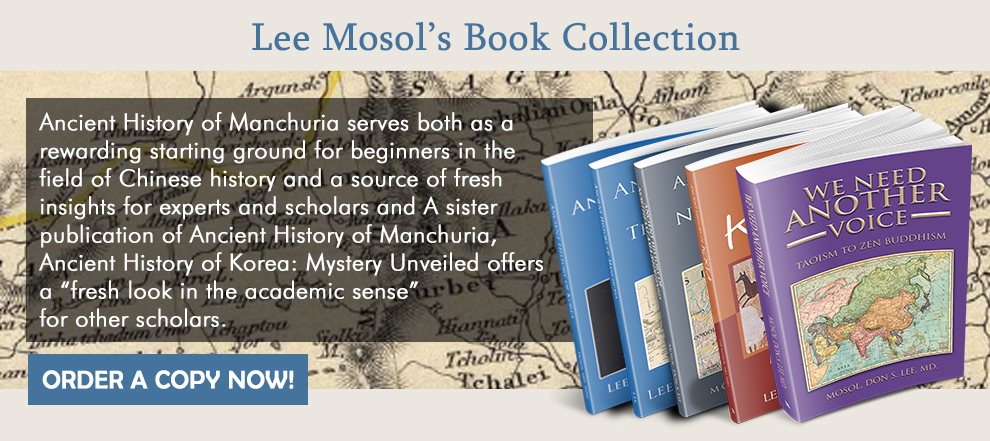孤竹國 was 中山國
During the Duke Ling of Wey (衛靈公:c. 534 — 492 BC), Gojoseon Mizi Xia (彌子瑕, Ha by Korean) accepted Confucius teaching and treated like a lovely lady Li (釐夫人), who were recorded as lady LiMi(釐爾女士) in the section (既醉) of Shijing.[1] They interpreted the phrase as “All drunken” as the royal clan entertaining. The ideo-logogram Li(釐) pointed out the location as the leader of first commune (帝鴻) had been in the Fen Shui valley. Shanhaejing also pointed the place as the beginning of Gang (降) creek from the Bright mountain (薄山) in the Fen Sui valley draining to the Yellow River by the Laing Mountain. [2] It was in the northern part of Original Nine Provinces and appeared in the southern Poetry Chu Ci (楚辭) as well. The Lovely lady Xi/Hi/Li(釐夫人) Lady Hei(釐[家福也]夫人) have been interpreted as “殷夫人,李夫人” who was a concubine. treason and execution of her family in different era.[3] She appeared as deity in Chinese folk religion, Confucian and Buddhism sometimes depicted as Nomad Deity came down from the Heaven to as Plum or Peach. [4]
Peach(餘桃) and Buddha (弗) appears at the time of the Hundred Schools of Thought. No one accepted Confucius philosophy, but those two leaders of Wie (衛) and Zhongshan (中山) accepted and demised. [5] Prince of Huainan (淮南子) left teaching from the Great family(泰族訓) clans. One band ran down to the south became to origin of the Dai (傣族) nationality.
Mizi Xia(彌子瑕) of Zhongshan that is Guzhu (孤竹) stood at the watershed of turning point from glorious period to the downhill and demised. It was tumultuous era while many feudal states stabbing each other. They treated him as a mythical figure. [6]
Ancient Korean language is the mother of the causality. Without knowing it, they failed to provide appropriate nomenclature and interpretation. The “White Horse Dialogue” of Gong-sun Long (公孫龍: c. 325–250 BC) is one good example. The original phrase (堅白之辯; lit. means Firm and Pure discourse), which means the “Debate Righteousness vs Might” in the Lü Shi Chun Qiu(呂氏春秋) had been changed to (離堅白) by the Taoist and Buddhist to (白馬之辯; White Horse debate) and associate to the Northern Mu-Taek (北人無擇) who has been considered as the Prince of Gojuk (孤竹君) by Mozi (墨子;墨翟, 墨翟; c. 475–221 BC). They applied clan name Mo in the Bal-Joseon (發朝鮮, 北州侯莫) and the prince of Zhongshan(中山公子牟) to Ma (馬) as being done before. Zhongshan (中山) was appeared as Zhongshan (仲山) since Western Zhou. They left Seal script (篆書,篆字) that is the precursor of Slave (隸書) style engraved by the Yaemaek people. Xu Shen (許慎:c. 58 – c. 148 CE) explained logograms and used the word current (今)often, such as “今經典變隸作䍏 and “廾, two hand” as “今變隸作” literally current Bian slave made”. He meant the (變/弁韓) region in the north used a different shape. [7] He cited the source as “庖犧” and “經典”, that is the foundation of YRVC and beginning of using ideo-logograms.
Very unusual name Ja-zi (子之)and Ja zi disturbance (子之之亂) appeared in the feudal state Yan. [8] Both the concept of Buddha (弗) and Ideal King (轉輪王) appears in the Huainanzi (淮南子) which was compiled by the one who lived in Huainan, Anhui Province of southern China. [9] That is the origin of Chinese logic known as a “white horse is not a horse 白馬非馬” paradox attributed to Gong-sun Long in the Warring States period. [10] Duke Ling of Wey (衛靈公; ruled c. 534 — 492 BC) and Mizi Xia (彌子瑕) of Zhongshan, who was fell in love to the mythical Yi Lady(釐夫人) were close alliance. [11]
It meant they respect ancient teaching, ignored the reality and lost the kingdom.
History has that Confucius learned the musical instrument from musical master of Wei(衛國)nation(孔子學鼓琴於師襄子) and left dubious phrase. [12] It appears to be one of many lost verses that Confucius didn’t include in the Shijing. [13] Confucius finally realized the poet as comparable to the King Wen (周文王; 1152–1050 BC) whom he admired the most and left the detail description about the poem as “黯然而黑,幾然而長,眼如望羊,如王四國,非文王其誰能為此也, literally Dark skin, tall man, his eyes as watching the ocean and kings of four countries(all around). Beside King Wen no one could have done this.”
Confucius depicted the imaginary poet from the ancient Wei(衛國) region as to the person from India and replaced Wei as to India that was the birthplace of primitive Buddhism. [14] Since the historical fact, that Confucius learned the musical instrument from musical master being recorded in many scriptures with different ideo-logograms. Mistranslation could be possible. Mozi(墨翟;墨子 c. 470 – c. 391 BC) appears to be the first person built the bridge between the ancient Gojoseon teaching through the primitive Buddhism from the India. There after Buddhist monk Sila (尸羅, 斯羅) appears in the Geummidal region, where Zhongshan Guk (中山國) had been and ruled by the same phonetic Motai clan (墨胎氏) associated with the legend of Boyi shū zhāi(伯夷 叔齊) story.[15] Chinese Bai-Du claim that they found Jade Ensign of with ancestor Mo (高祖墨玉圭) in the Tangshan (唐山) area and interpreted as the evidence of Guzhu state.[16] Ideo-logogram Mo (墨, 莫, 牟) is one of PLCs being used to the family name of the Bal-Joseon in the North. Mo (牟) was the name of the Zhongshan prince. One band of Buyeo clan got the name Moyong/ Murong (慕容) as family name. Tongdian has that Mo (慕) was the family name of Silla King.[17]
It was a grand scheme from the very beginning to conceal the first and last capital of Gojoseon, Geummidal during the Warring States period. [18] They moved the Yan “成王帥燕師城韓” from the birthplace of Western Zhou to the current Beijing region. Ancient Gojoseon custom was introduced to the birthplace of Buddhism and came back to Geummidal region as Mireuk Buddhism.
Religion:
They implanted the primitive Buddhism through the Taoism to the ancient Korean faith that was described Yaemaek custom Maekdo (貉道) or Sado (斯道) to Mireuk (彌勒) faith. The current ruling class of Chinese came out with different outfit CCP. Western culture should realize the goal and objectives of the Chinese government. Without harnessing the beast, Northeast Asia all around the China will be remained as vulnerable region. The core of Huayan (華嚴宗) amalgamated the Si-do (斯道,貊道), the Teaching of Si (Yaemaek) people from Geummidal and delivered a new sect of Buddhism and named Maitreyan (彌勒) Buddhism.
Book of Sui explained the Green Province(青州) and used the phrase “俗彌侈泰”, that means the region had lots of Gojoseon custom in the Shandong Province during the era of Han dynasty. [19]
The extended the SMa-Out with unknown limits (王錫韓侯,奄受北國, 因以其伯) to the Hongshan Culture territory and implanted the Green Province(青州) from the Geummidal to the Shandong Province.
As the ancient Korean spread out wide area, one band went to the NE of India where Buddhism evolved. It was named as Sinja Village.
Sinja Valley, thought to be the place of origin of the Khasas and the Nepali language, was at the heart of the Khas Malla empire. From https://en.wikipedia.org/wiki/Nepal#Ancient_Nepal October 9th 2022.
The current Korean word “Tree(나무), father (아버지, 아빠,아비) wish (희망, 소원, 바램, 바라다) are in Buddhist Prayer:
“나무아비타불 관세음 보살”
It could well be interpreted as the wish and hope. It is reflected in the front of the Totem Pole, 서낭당, 樹村 by an old lady. 肅慎之國在白民北,有樹名曰雄常,先入代帝
[1]. 詩說大雅: 《既醉》:王族與燕畣《行葦》之詩,賦也. The great clan(泰族) chattering in the banquet.
[2]. 《中山經》薄山之首,曰甘棗之山. 穆天子傳 卷六:天子南登于薄山窴軨之隥,乃宿于虞
[3]. Lady Li – Wikipedia. 殷夫人(《封神演义》人物)_百度百科 (baidu.com). 佛道儒并尊的降魔天神.
[4]. 詩經 生民之什 既醉:既醉以酒、既飽以德.君子萬年、介爾景福.其僕維何、釐爾女士。釐爾女士、從以孫子. 山海經 中山經: 《中山經》薄山之首。共水出焉,而西流注于河. 《中次四經》釐山之首,曰鹿蹄之山,其上多玉,其下多金。甘水出焉,而北流注于洛,.凡釐山之首,自鹿蹄之山至于玄扈之山.有大人之國.
[5].淮南子 泰族訓: 管子憂周室之卑,諸侯之力征,夷狄伐中國,民不得寧處,故蒙恥辱而不死,將欲以憂夷狄之患,平夷狄之亂也。孔子欲行王道,東西南北七十說而無所偶,故因衛夫人、彌子瑕而欲通其道。此皆欲平險除穢,由冥冥至炤炤,動于權而統於善者也。Dai people – Wikipedia
[6].戰國策 趙三: 衛靈公近雍疸、彌子瑕。二人者,專君之勢以蔽左右. Mizi Xia – Wikipedia. 呂氏春秋 貴因: 墨子見荊王,錦衣吹笙,因也。孔子道彌子瑕見釐夫人,因也. 說苑 雜言:彌子瑕愛於衛君,衛國之法:竊駕君車罪刖。彌子瑕母疾,人聞,夜往告之..彌子瑕食桃而甘,不盡而奉君,君曰:「愛我而忘其口味。」及彌子瑕色衰而愛弛,得罪於君,君曰:「是故嘗矯吾車,又嘗食我以餘桃。」故子瑕之行未必變初也,前見賢後獲罪者,愛憎之生變也。
[7].說文解字网部: 庖犧所結繩以漁。从冂,下象网交文。凡网之屬皆从网。今經典變隸作䍏.
[8].孟子 公孫丑下: 子噲不得與人燕,子之不得受燕於子噲. 鹽鐵論 詔聖:魯好禮而有季、孟之難,燕噲好讓而有子之之亂. 史記 燕召公世家:蘇秦之在燕,與其相子之為婚,而蘇代與子之交.
[9]. User dictionary: 無擇地獄: 無間地獄之古譯。以造無間業之人,不擇何人而押收之故也。楞伽經三曰:「云何男子女人行五無間,不入無擇地獄?」正法華經一曰:「其大光明照諸佛國,靡不周徧,至於無擇大地獄中,上達三十三天。」堅白 | 道教辭典.
[10].道家 列子: 中山公子牟者,魏國之賢公子也。好與賢人游,不恤國事,而悅趙人公孫龍。白馬非馬,形名離也。孤犢未嘗有母非孤犢也。「樂正子輿曰:「子以公孫龍於馬皆條也。設令發於餘竅,子亦將承之。」公子牟默然良久告退曰:「請待餘日,更謁子論。」呂氏春秋 審分覽 君守: 其出彌遠者,其知彌少。故博聞之人、彊識之士闕矣,事耳目、深思慮之務敗矣,堅白之察、無厚之辯外矣。不出者,所以出之也;不為者,所以為之也。此之謂以陽召陽,以陰召陰.
[11]. 呂氏春秋 慎大覽 貴因: 夫審天者,察列星而知四時,因也。推歷者,視月行而知晦朔,因也。墨子見荊王,錦衣吹笙,因也。孔子道彌子瑕見釐夫人,因也。湯、武遭亂世,臨苦民,揚其義,成其功,因也。故因則功,專則拙。因者無敵。國雖大,民雖眾,何益?
[12]. 孔子家語 : 孔子學琴於師襄子。襄子曰:「吾雖以擊磬為官,然能於琴。今子於琴已習,可以益矣。」孔子曰:「丘未得其數也。」有間,曰:「已習其數,可以益矣。」孔子曰:「丘未得其志也。」有間,曰:「已習其志,可以益矣。」孔子曰:「丘未得其為人也。」有閒,曰。孔子有所繆然思焉,有所睪然高望而遠眺,曰:「丘迨得其為人矣。黮而黑,頎然長,曠如望羊,掩有四方,非文王其孰能為此?」師襄子避席葉拱而對曰:「君子聖人也!其傳曰:《文王操》. same in韓詩外傳 卷五: and 史記世家 孔子世家: 孔子學鼓琴師襄子。師襄子曰:「可以益矣。」.
[13]. https://en.wikipedia.org/wiki/Classic_of_Poetry: Confucius collected only Zhou 周 and 魯詩.
[14]. http://big5.zhengjian.org/node/50540.
[15]. https://zh.wikipedia.org/wiki/%E5%AD%A4%E7%AB%B9%E5%9B%BD.。孤竹國伯夷、叔齊的故事流傳至今。在前660年被齊國、燕國所滅。https://en.wikipedia.org/wiki/Guzhu: 北州侯莫
[16]. https://baike.baidu.com/item/%E4%BC%AF%E5%A4%B7%E5%8F%94%E9%BD%90/7024495
[17].通典 邊防一 新羅: 梁武帝普通二年,王姓慕名秦,始使人隨百濟獻方物。其俗呼城曰「健牟羅」,其邑在內曰「喙評」,喙,呼穢反。在外曰「邑勒」,亦中國之言郡縣也。國有六喙評、五十二邑勒。土地肥美,宜植五穀,多桑麻果菜鳥獸,物產略與華同。
[18]. 戰國策 趙三 衛靈公近雍疸彌子瑕. @.釐夫人=佛道儒并尊的降魔天神. Mizi Xia – Wikipedia :Mizi Xia (Chinese: 彌子瑕; pinyin: Mízi Xiá) was a semi-legendary figure from the Zhou dynasty Period of China. While Mizi Xia may have actually existed, nothing is known about him beyond this story.
[19].隋書 地理中 青州: 北海郡舊置青州. 益都.周禮職方氏:「正東曰青州。」吳札觀樂,聞齊之歌曰:「泱泱乎大風也哉,國未可量也。」在漢之時,俗彌侈泰,織作冰紈綺繡純麗之物,號為冠帶衣履天下。
About the Author
Written by Lee Mosol
Retired physician from GWU and Georgetown University in 2010 2011: First Book in Korean "뿌리를 찾아서, Searching for the Root" 2013: Ancient History of the Manchuria. Redefining the Past. 2015: Ancient History of Korea. Mystery Unveiled.
Recent Posts
Recent Comments
- Don S. Lee MD on 부여의 시말:
- Seowa etymologist on Silla from Zhina(Southern China) to Korean Peninsula.
- James Kim on 약우 (若愚)
- James Kim on 약우 (若愚)
- James Kim on 약우 (若愚)
Archives
- January 2025
- November 2024
- May 2024
- February 2024
- October 2023
- August 2023
- June 2023
- May 2023
- March 2023
- February 2023
- January 2023
- August 2022
- July 2022
- April 2022
- March 2022
- January 2022
- December 2021
- November 2021
- October 2021
- September 2021
- August 2021
- July 2021
- June 2021
- March 2021
- February 2021
- January 2021
- December 2020
- November 2020
- October 2020
- September 2020
- May 2020
- April 2020
- March 2020
- February 2020
- January 2020
- December 2019
- November 2019
- October 2019
- September 2019
- August 2019
- July 2019
- June 2019
- May 2019
- April 2019
- February 2019
- January 2019
- December 2018
- November 2018
- October 2018
- September 2018
- July 2018
- March 2018
- February 2018
- December 2017
- November 2017
- October 2017
- September 2017
- August 2017
- July 2017
- June 2017
- May 2017
- April 2017
- March 2017
- February 2017
- January 2017
- December 2016
- November 2016
- October 2016
- September 2016
- August 2016
- July 2016
- June 2016
- May 2016
- October 2015
- September 2015
- July 2015
- May 2015
- April 2015
- November 2014



